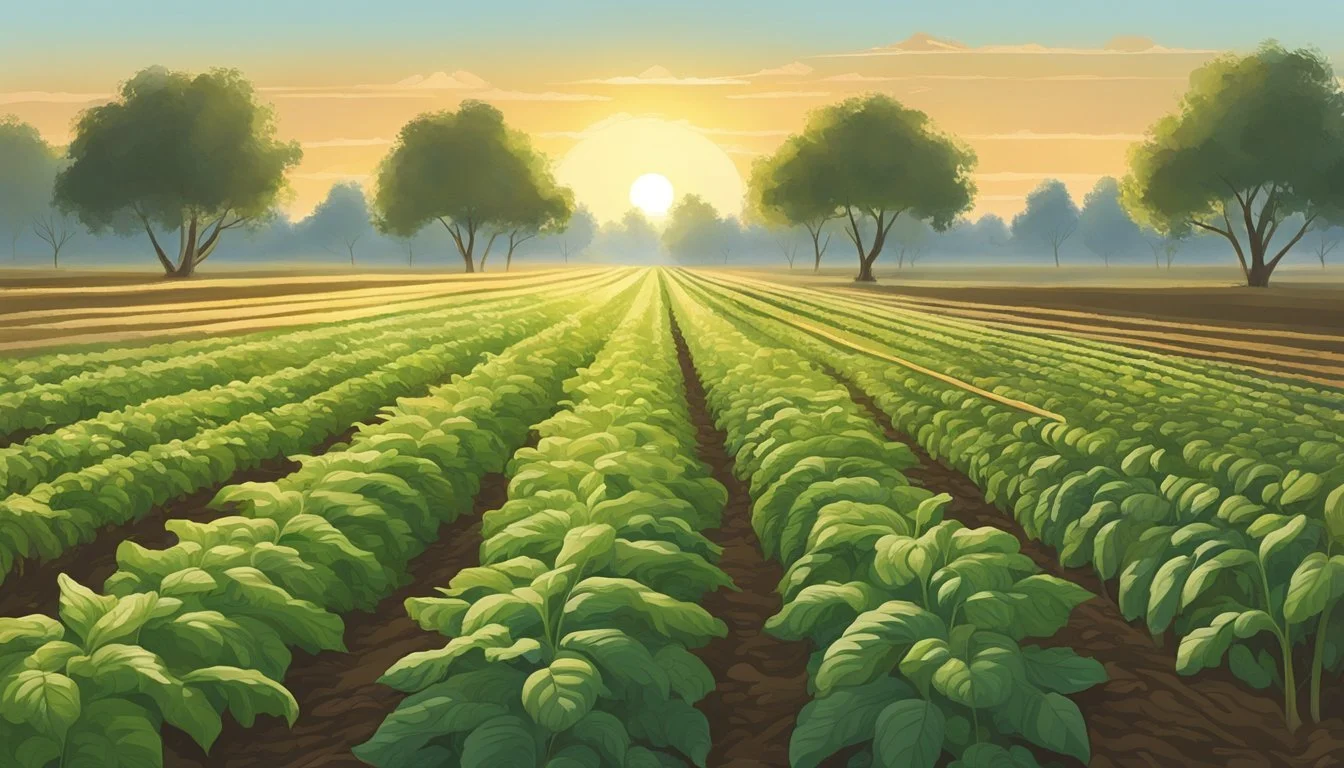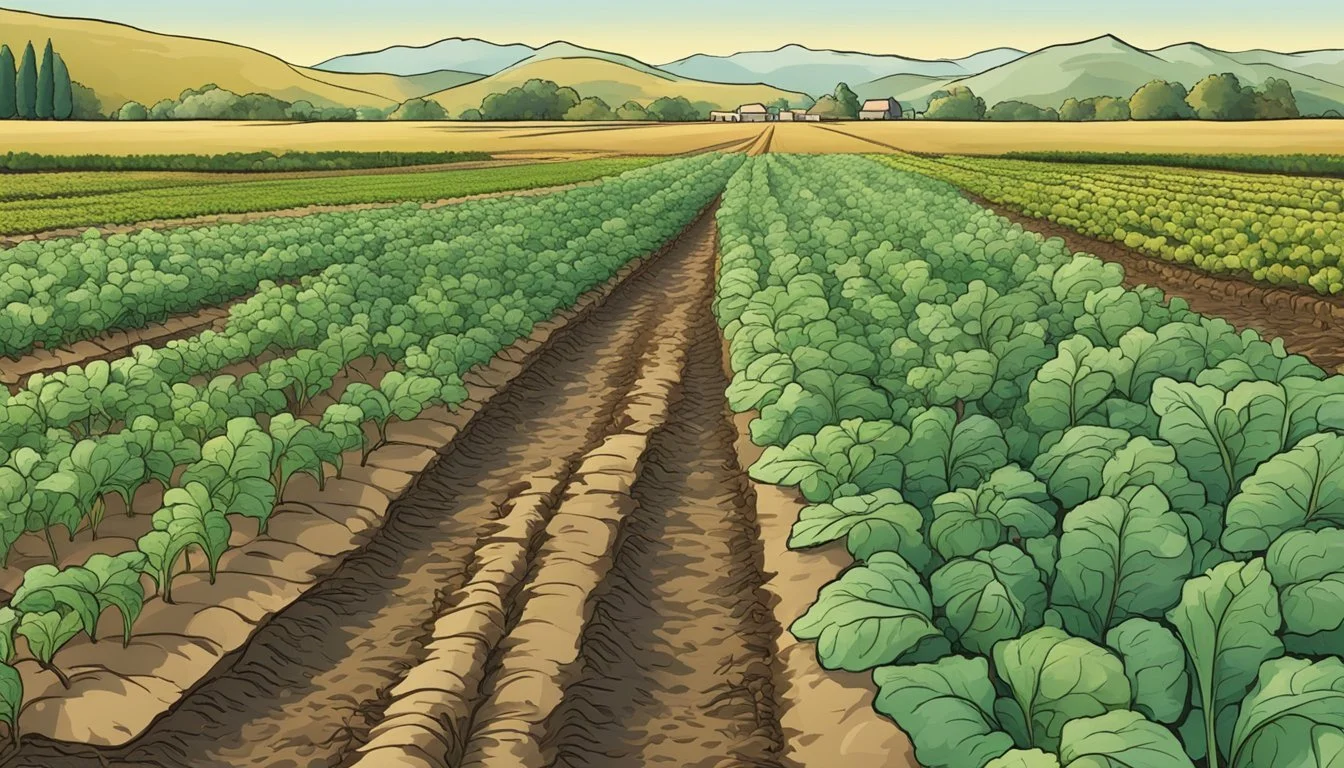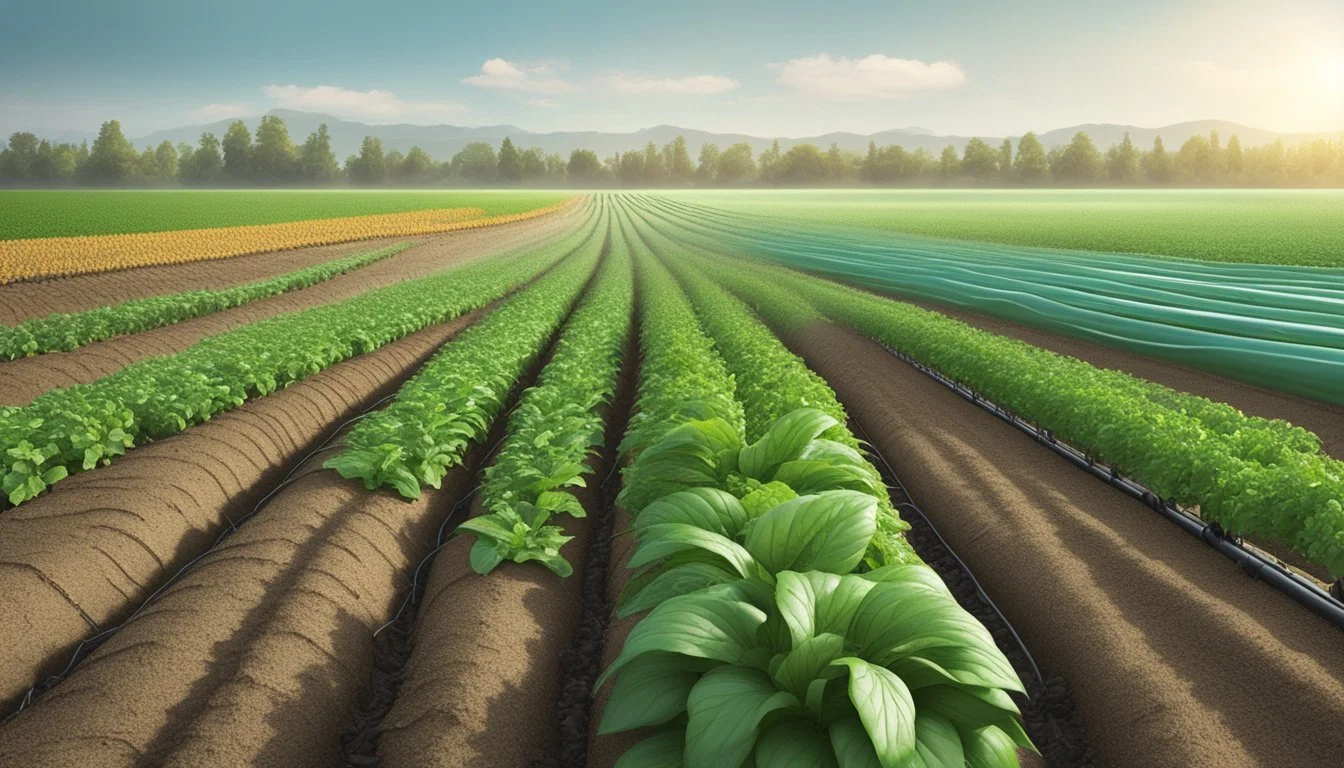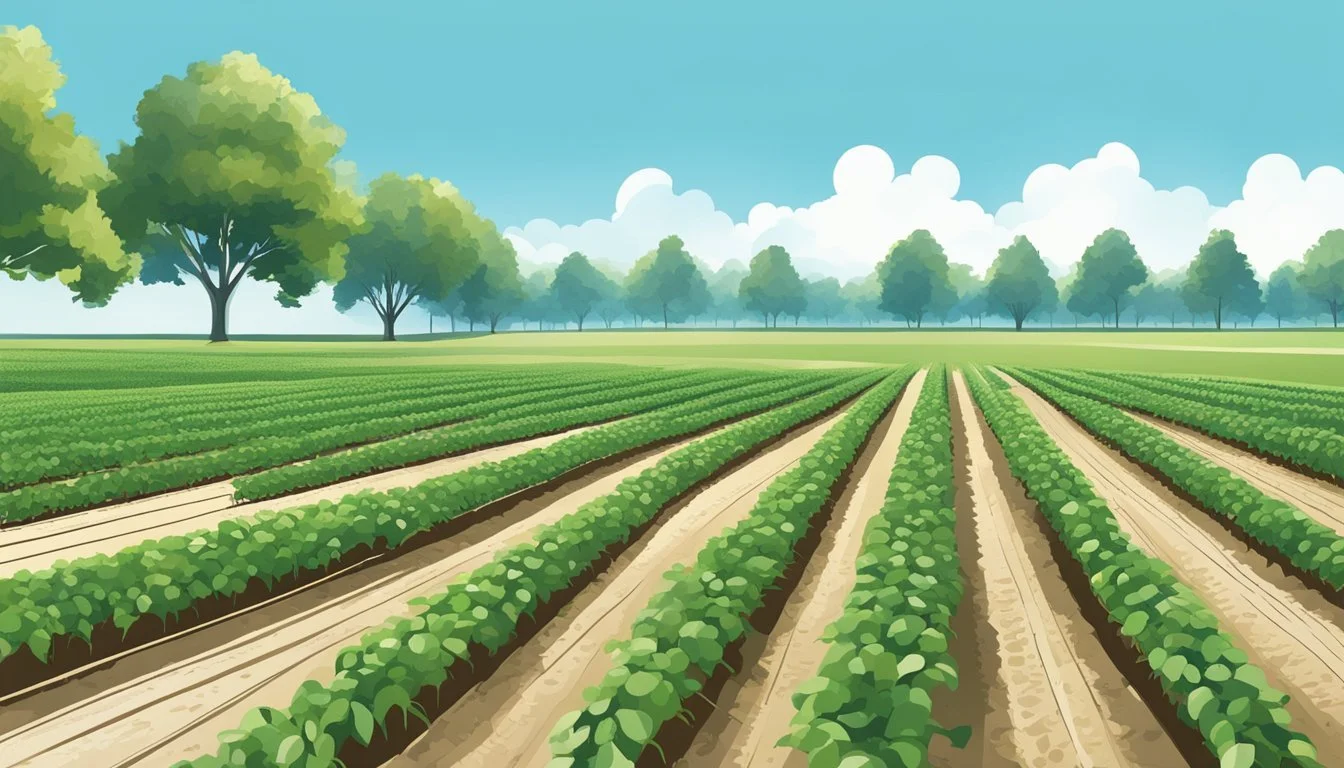Maximizing Efficiency in Row Irrigation with Drip Tape
Optimizing Water Usage for Sustainable Homesteading
Efficiency in irrigation is a cornerstone of sustainable agriculture, particularly for homesteaders who strive to optimize their water usage while maintaining a healthy crop yield. Drip tape irrigation emerges as a practical solution in this context, offering precise water delivery directly to the plant roots. This method conserves water by minimizing evaporation and reducing runoff, a significant enhancement over traditional sprinkler systems which disperse water over wide areas, increasing the likelihood of waste.
In row crops, drip tape irrigation is especially beneficial due to its adaptability and low-cost investment. By delivering water at low pressures, it ensures that each plant receives a consistent water supply without oversaturation, promoting efficient water absorption and bolstering root health. Moreover, since water is localized to the crop's root zone, weed growth between rows is naturally suppressed, leading to less competition for resources and a reduction in the need for herbicides.
Implementing drip tape systems involves careful planning and installation, with considerations for the correct length of tape, emitter spacing, and flow rates tailored to specific crop requirements. This method is versatile enough for various applications, from raised garden beds to large-scale agricultural operations, and is easily integrated with timers and sensors for a more automated, labor-saving irrigation approach.
Understanding Row Irrigation and Drip Tape
This section explores the fundamental concepts behind row irrigation and the utilization of drip tape, highlighting its efficiency and ease of use.
Basics of Row Irrigation
Row irrigation is a methodical approach tailored for crops planted in straight lines. It involves the precise delivery of water directly to the plant roots, reducing waste and conserving water. Traditional row irrigation techniques vary, ranging from furrow irrigation, where water is channeled in small ditches between rows, to overhead sprinklers that distribute water across expansive areas. The goal is to provide uniform water distribution to each plant, which can be challenging with irregular terrain or varied soil types.
Advantages of Using Drip Tape
Drip tape is a specialized, thin-walled drip line used in row crop irrigation. Its advantages are profound:
Efficiency: Drip tape delivers water directly to the plant base, minimizing evaporation and runoff.
Uniformity: It provides a consistent water supply, ensuring each plant receives equal attention.
Cost-Effective: Reduced water usage translates to lower utility bills.
Convenience: Installing a drip tape system is relatively straightforward, and it's adaptable for raised beds, in-ground rows, and gardens of varying sizes.
Low-Pressure Functionality: Drip tape operates effectively at low water pressures, down to about 4 PSI, making it suitable for various conditions.
Versatility: Suitable for at-grade, mulched, or subsurface applications, drip tape fits diverse farming or gardening scenarios.
By prioritizing the root zone, drip tape empowers homesteaders to cultivate thriving crops while conserving resources and maximizing yield outcomes.
Planning Your Row Irrigation System
Efficient irrigation begins with meticulous planning. This section outlines the crucial steps homesteaders need to take to ensure their row crops receive optimal watering without waste.
Evaluating Water Requirements
One must assess crop type and life stage alongside local climate conditions to determine water needs. A precise evaluation prevents over- or under-watering, balancing crop health with conservation. For example, leafy greens may require different watering levels compared to fruiting plants like tomatoes.
Crop Type: Consider the water demands of specific crops.
Growth Stage: Account for increased needs as plants mature.
Climate: Factor in rainfall patterns and evaporation rates.
Layout and Design
An effective design maximizes irrigation efficiency and covers all crops evenly. Plot your garden on graph paper, marking rows, spacing, and main water lines. Plan for the drip tape to run along the length of your rows, ensuring even coverage.
Mainline Placement: Where your water source meets the system.
Row Spacing: Match drip tape layout with plant spacing requirements.
Drip Tape Pathways: Plan for tape to traverse the full length of each row.
Drip Tape Selection
Choose a drip tape that's durable and suits your system's pressure capabilities. Consider:
Thickness: A thicker drip tape lasts longer but may require a higher working pressure.
Emitter Spacing: Emitter intervals should align with your crops' root zones.
Flow Rate: Match the drip tape’s flow rate to your plants' water needs and soil absorption capacity.
With careful consideration of these areas, homesteaders can create a tailored irrigation plan benefitting the health of their crops and efficiency of water use.
Installation Guide
Installing drip tape for row irrigation requires careful planning and execution to ensure efficient water delivery to plants. This guide outlines the specific steps involved in preparing the field, laying the drip tape, and connecting to a water source.
Preparing the Field
Before laying the drip tape, the field must be clear of debris and weeds to avoid puncturing the tape. It is essential to level the field for even water distribution and calculate the spacing between rows based on the crop's requirements. The soil should be sufficiently moist to ease the laying process of the drip tape.
Laying the Drip Tape
Laying the drip tape requires precision to ensure proper alignment with the crop rows. The following process should be followed:
Measure and mark: Use a measuring tape to mark the row where the drip tape will be laid. Ensure the tape is aligned straight.
Unroll the tape: Carefully unroll the drip tape along the marked line, taking care not to twist the tape.
Secure the tape: Use soil staples or weights to secure the tape at the beginning of the row. It should be laid flat against the soil for consistent water flow.
Bury or cover the tape (if required): Some crops benefit from burying the tape a few inches under the soil to prevent damage and evaporation.
Connecting to Water Source
The final step involves connecting the drip tape to the water source. The connection should be watertight to prevent leaks and ensure efficient water use. Follow these steps:
Install a backflow preventer: This device prevents contamination of the main water supply.
Connect to the main water line: Attach the drip tape to the main line using the appropriate fittings. Ensure that the connections are secure.
Install a filter: A filter is necessary to keep debris out of the drip tape and avoid clogging.
Set up a pressure regulator: This ensures the water pressure is consistent and suitable for the drip tape to function correctly.
Test the system: Turn on the water to check for leaks and make sure water is being distributed evenly along the drip tape.
Operation and Maintenance
Efficient operation and maintenance are crucial for the longevity and effectiveness of a drip tape irrigation system. Regular attention ensures that the system conserves water and contributes to optimal plant growth.
Routine Checks
Inspection Frequency: Ideally, one should inspect the system weekly to monitor for any inconsistencies in flow or damage to the drip tape.
Pressure Gauges: Checking pressure gauges helps in maintaining the correct water pressure, which is vital for uniform irrigation.
Visual Inspection:
Check for signs of wear and tear, such as cracks or holes.
Ensure the drip emitters are not blocked by dirt or debris.
Dealing with Clogs and Leaks
Immediate Action: Clogs and leaks should be addressed as soon as they are detected to prevent water wastage and system inefficiency.
Clog Prevention and Resolution:
Flush the system regularly to clear out debris.
Utilize filters and clean them regularly.
Leak Management:
Seal any small leaks with repair tape or replace sections of drip tape if the damage is extensive.
Regularly check and tighten connections to prevent leaks.
Seasonal Maintenance
Winterization: If located in a freeze-prone area, it’s important to drain the system completely to prevent damage from frozen water.
Preparation for the Growing Season:
Before planting, check the entire system, replace damaged parts, and ensure it’s operational.
Post-harvest, flush the lines and clean filters to keep the system in good condition for the next season.
Storage:
If the system won't be used for an extended period, store drip tapes in a cool, dry place away from direct sunlight to avoid degradation.
Water Management and Conservation
Effective water management and conservation in drip tape irrigation hinge on precise scheduling, maximizing direct water application, and utilizing automation to ensure consistency and reduce waste.
Scheduling Irrigation
Early Morning Timing: Scheduling irrigation during the early morning hours reduces evaporation rates and wind interference.
Soil Moisture Monitoring: Utilizing soil moisture sensors can guide the timing of irrigation events to coincide with the plants' specific water needs.
Efficient Water Usage
Targeted Application: Drip tape delivers water directly to the root zone, drastically cutting down on evaporation and runoff.
Uniform Distribution: Ensuring the drip tape system is properly laid out to achieve uniform water distribution eliminates dry spots and conserves water.
Automating the System
Timers: Install timers to turn the irrigation on and off, providing regular watering without manual intervention.
Sensor Integration: Integrate automation with sensors that measure soil moisture levels, ensuring watering only occurs when necessary.
Troubleshooting Common Issues
In optimizing row irrigation with drip tape, homesteaders frequently encounter specific issues. This section provides targeted solutions for the most common problems, ensuring that irrigation systems operate at peak efficiency.
Pressure Problems
Pressure imbalances in a drip tape system can either stem from too high or too low water pressure. High pressure can cause tape rupture or excessive water delivery, while low pressure may lead to insufficient water supply and poor plant growth.
To address high pressure, install pressure regulators to maintain a consistent water flow.
For low pressure, check for clogs in filters or emitters and ensure the water source provides adequate flow.
Root Intrusion
Root intrusion happens when plant roots grow into the drip tape, obstructing water flow. It typically occurs in emitters due to the water-saturated zones they create, attracting roots in search of moisture.
Employ root-inhibiting products around emitters to prevent root growth inside the tape.
Schedule regular inspections of the drip tape to catch and address intrusions early.
Drip Tape Damage
Physical damage to drip tape is inevitable over time due to environmental exposure or mechanical interference, such as from farm equipment or pest activities.
Inspect the drip tape routinely for signs of damage, such as holes, tears, or abrasions.
Repair minor damage with tape or a coupler specifically designed for drip tape.
Replace sections with severe damage to prevent system inefficiency or total failure.
Maximizing Crop Yield with Drip Tape
In the realm of row irrigation, drip tape emerges as a pivotal tool, enhancing water distribution and contributing to yield maximization. It presents two main areas of advantage: precision in fertilization and effective weed control.
Fertilization Practices
With drip tape, fertilizers can be applied directly to the plant root zone, a technique known as fertigation. This method ensures that plants receive nutrients in the most accessible form. Here are a few specifics:
Uniform Distribution: Fertigation through drip tape leads to uniform nutrient distribution, mitigating the risk of both under and over-fertilization.
Reduced Leaching: Precise application minimizes nutrient leaching, making this method both environmentally friendly and cost-effective.
Weed Control
Effective weed control is facilitated through the localized watering provided by drip tape. Details on its impact include:
Reduced Weed Growth: Since water is directed to the crop rather than the entire field, weed germination is significantly lessened.
Targeted Irrigation: Drip tape delivers water to the crop, not the weeds, depriving weeds of water, and thus, hindering their growth.
Environmental Considerations
Integrated into drip tape irrigation strategies, environmental considerations underscore the importance of sustainable farming practices. These measures protect ecosystems while optimizing agricultural output.
Impact on Soil Health
Drip tape irrigation can significantly enhance soil health by delivering water directly to the plant roots, thereby reducing surface run-off and preventing soil erosion. Uniform water distribution maintains consistent soil moisture levels essential for healthy soil structure and fertility. The precise delivery of water also limits the leaching of nutrients, ensuring that plants receive the intended fertilization.
Advantages:
Reduced soil erosion
Consistent moisture levels
Improved nutrient retention
Water Conservation Impact
In terms of water conservation, drip tape irrigation exhibits a high water use efficiency. It minimizes water waste by eliminating evaporation and reducing run-off typically associated with traditional irrigation methods. The system's design allows for measured water application, matched with plant requirements, and can adapt to varying soil conditions, ultimately contributing to significant water savings.
Key Points:
Lowered evaporation rates
Diminished run-off
Adaptable to various soil conditions
Case Studies and Real-World Applications
Recent studies have emphasized the significance of drip irrigation, especially drip tape, in enhancing water efficiency. For instance, research documented in ScienceDirect reports a 14.39% increase in maize yield under drip irrigation compared to conventional methods.
Another example involves a meta-analysis of irrigation modernization conducted by Kimmich and colleagues. They examined various case studies and found that modernizing irrigation practices can lead to substantial improvements in water use efficiency. However, it is crucial to note that simply adopting new technology does not automatically result in better water management. The study encourages a comprehensive approach that also addresses management practices.
Real-world applications further suggest that coupling drip tape irrigation with smart monitoring can drastically improve outcome metrics. By tracking soil, plant, and weather variables in real-time, farmers are empowered to make more informed decisions. This integration with technology is highlighted as a future-facing solution in sustainable agriculture practices.
Increased yield: Drip tape leads to higher crop output.
Enhanced water use: Efficient water distribution reduces waste.
Economic benefit: Improved resource management translates to cost savings.
Furthermore, a case study focused on smart and sustainable irrigation design highlights the necessity for well-informed system implementation. Expert interviews and literature underscored the importance of grounding the design in practical needs and theoretical knowledge. This holistic approach ensures that drip tape irrigation systems are both effective and adaptable to specific homestead requirements.
Conclusion
Drip tape irrigation stands as a highly effective method for water conservation and efficiency in row crop agriculture. It delivers water directly to the plant roots, reducing evaporation and minimizing the loss of water to areas between rows. This targeted approach supports optimal plant growth by ensuring each plant receives the necessary moisture while also mitigating water waste.
Key Benefits of Drip Tape Irrigation:
Water Efficiency: Reduces overall water usage compared to traditional irrigation methods.
Cost-Effective: Offers a relatively low investment in infrastructure and operation.
Adaptability: Suits various crops and garden sizes, from small raised beds to larger fields.
Soil Preservation: Minimizes soil erosion and nutrient leaching by gentle and localized watering.
Selection Guidelines:
Choose appropriate tubing or tape size for the specific application.
Ensure correct spacing—a balance between plant needs and tape layout promotes maximum yield.
Implement adjustments for soil type, as water dispersal can vary between different textures.
Homesteaders who adopt drip tape systems contribute to sustainable agricultural practices. It allows them to achieve better crop yield while using fewer resources, becoming part of the solution to the worldwide water crisis. The importance of establishing a reliable and efficient drip tape irrigation system is underscored by its benefits for both the farmers and the environment.





